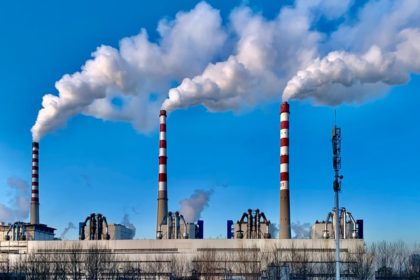
ITS IMPACT AND THE WAY FORWARD
Article written by Danisha Naidu, Candidate Attorney, checked by Davina Naidoo, Associate, and released by Alec Veitch, Partner at Schindlers Attorneys
27 October 2021
INTRODUCTION
This article aims to give a brief overview of the Carbon Tax Act, as well as the effects of carbon tax on the South African construction industry and the way forward.
WHAT IS CARBON TAX?
The Carbon Tax Act1 (“the Act”) came into effect on the 1st of June 2019. The objective of the Act is to implement carbon tax, as a means to combat climate change, by reducing the carbon dioxide equivalent of greenhouse gas (“GHG”) emissions.
In terms of section 1 of the Act, the carbon dioxide equivalent of GHG emissions are subject to carbon tax. These emissions are determined in accordance with either a reporting methodology of the Department of Forestry, Fisheries and the Environment, or the prescribed formulas of the Act. For example, carbon tax is calculated by the multiplication of the carbon dioxide equivalent (“CO2e”) by R120/tonne of CO2e, which is the current rate of tax.2
PHASES OF IMPLEMENTATION
The first phase has a carbon tax rate of R120 per ton of carbon dioxide equivalent GHG emissions.3 The rate is set to increase annually by inflation plus 2%, until 2022 and thereafter, annually only by inflation.4
THE POLLUTER PAYS PRINCIPLE
The Act further highlights the international environmental law concept of the “Polluter-Pays- Principle”, whereby those who pollute are financially liable to mitigate the adverse effects of the pollution on the environment and the public.5
In an effort to encourage industries, such as the construction industry, to transition to cleaner technologies and reduce their GHG emissions, the Act provides for tax-free emissions allowances which will be implemented in terms of Schedule 2 of the Act. The applicable allowance for the construction industry is a 60% basic tax free allowance and a 10% offset allowance.6 These allowances allow for the progression in implementing and utilising greener technologies, making this route more attractive to the various sectors.7
The Climate Change Bill
Additionally, the Climate Change Bill (“the Bill”), set to be tabled in Parliament later this year 2021, seeks to provide the necessary policies for the various economic sectors, including the construction industry, in order to make the necessary decisions to aid in ensuring a significant reduction in GHG emissions.8
Furthermore, when the eventual Climate Change Act comes into effect, the relevant industries, including the construction industry, will most likely be required to prepare, submit, implement, monitor and report on their respective response strategies and plans of action, in relation to their responsibilities in terms of the Climate Change Act and the Carbon Tax Act.9
THE CONSTRUCTION INDUSTRY’S CARBON FOOTPRINT
The construction industry and its operations accounted for approximately 40% of the global GHG emissions in 2019.10 The Green Building Council of South Africa accordingly deemed the construction sector as the largest producer of GHG emissions.11
It should be noted that prior to the drafting of the Bill, Environmental, Social, and Governance (“ESG”) criteria were used by various construction companies. ESG criteria is a set of standards that a company may choose to act in accordance with, in order to attract “socially conscious” investors.12 For instance, Environmental criteria determine how a construction company would perform in a manner that would help mitigate GHG emissions.
THE C40 CITIES SOUTH AFRICA BUILDINGS PROGRAMME
The construction industry, as previously mentioned, is said to be the largest GHG emitter in South African cities, on account of the fact that buildings use coal-based electricity, which unlike other forms of energy, has a higher emission intensity.13
In an effort to combat this, Sustainable Energy Africa (“SEA”) has partnered with C40, to create the C40 Cities South Africa Buildings Programme, whereby the four major South African cities are all working towards introducing zero carbon building by-laws for new building by 2030.14
THE IMPACT OF THE COVID-19 PANDEMIC
Due to the temporary shut-downs and the various lockdown regulations implemented globally and in South Africa, there was a dramatic decrease in the global GHG emissions, as for a period, construction operations, among other business sectors, came to a halt.15
However, as life returned to a new normal, businesses operations resumed and most industries sought out to rebuild themselves into unique hybrid models. Accordingly, GHG emissions returned to their previous levels and the focus on the same remains a priority.
AN EXAMPLE OF SUSTAINABLE CONSTRUCTION – HEMPCRETE
While there are a number of conventional ways to mitigate GHG emissions in construction operations, the use of “hempcrete” is an undeniably innovative method to adopt.
Hempcrete is a building material that is made from hemp. It is both carbon negative, as well as a carbon sink. This means that it in addition to not emitting GHG, this material also absorbs carbon dioxide.16 It is also said that Hempcrete is both fire and pest resistant, in addition to having excellent insulation capabilities.17
A South African company based in Cape Town, pioneered the use of Hempcrete in South Africa. This is evidenced by the House that Hemp Built” in the Noordhoek suburb of Cape Town.18
Despite its numerous benefits, the cultivation and industrialisation of hemp is still illegal in South Africa and hemp used for construction materials, is usually imported from countries such as France and the United Kingdom, making it an expensive commodity.19
Fortunately, however, the Minister of Agriculture, Land Reform and Rural Development announced that the Department would be issuing and monitoring permits for the production of Hemp in South Africa, from October 2021.20
CONCLUSION
A sustainable future is dependent on a healthy environment. Therefore, introducing reform in industries such as the construction sector, and enforcing its implementation as per the Carbon Tax Act, is fundamental to creating a better future for all.
VALUE
Understanding the Carbon Tax Act and the implications of the same on the construction industry and discussing the way forward.
[1] Act 15 of 2019.[2] Zireva, RD, The Carbon Tax Act Explained, (2020), https://www.thesait.org.za/news/498153/The-Carbon-Tax-Act- Explained.htm (Accessed on 23 October 2021).
[3] ‘Carbon Tax’, The South African Revenue Services, https://www.sars.gov.za/customs-and-excise/excise/environmental-levy- products/carbon-tax/ (accessed on 15/10/2021).
[4] Ibid.
[5] ‘What is the Polluter Pays Principle?’, The London School of Economics and Political Science, (2018), https://www.lse.ac.uk/granthaminstitute/explainers/what-is-the-polluter-pays-principle/ (Accessed on 15 October 2021).
[6] Schedule 2 of the Act.
[7] Ibid.
[8] NATIONAL CLIMATE CHANGE RESPONSE – WHITE PAPER – Page 14 –
https://www.environment.gov.za/sites/default/files/legislations/national_climatechange_response_whitepaper.pdf (accessed on 16 October 2021).
[9] Ibid.
[10] ”Construction Sector biggest greenhouse gas contributor”, Engineering News, (2019), https://www.engineeringnews.co.za/article/building-construction-and-operations-largest-contributor-of-greenhouse-gasses- 2019-05-30, (accessed on 15 October 2021).
[11] Ibid.
[12] Scott, G, Courage, A, What are Environmental, Social and Governance Criteria?, (2021), https://www.investopedia.com/terms/e/environmental-social-and-governance-esg-criteria.asp (Accessed on 22 October 2021).
[13] “In 2021, South African cities can turn crisis into opportunity for a just low carbon transition. Here’s how.” (2021) https://www.c40knowledgehub.org/s/article/In-2021-South-African-cities-can-turn-crisis-into-opportunity-for-a-just-low- carbon-transition-Here-is-how?language=en_US (accessed on 19 October 2021).
[14] Ibid.
[15] “Raubex warns of loss after initial Covid-19 lockdown halted construction”, Business Live, (2020), https://www.businesslive.co.za/bd/companies/industrials/2020-10-08-raubex-warns-of-loss-after-initial-covid-19-lockdown- halted-construction/ (accessed on 16 October 2021).
[16] Roberts, T, “Building with Hempcrete”,(2020), https://www.buildwithrise.com/stories/building-with-hempcrete (accessed on 16 October 2021).
[17] Ibid.
[18] https://hemporium.com/ (accessed on 16 October 2021).
[19] Ibid.
[20] Deklerk, A, “Government to start issuing permits for hemp production in October”, (2021), https://www.timeslive.co.za/politics/2021-05-13-government-to-start-issuing-permits-for-hemp-production-in-october/ (accessed on 27 October 2021).

Divina Naidoo
Associate Attorney

Danisha Naidu
Candidate Attorney

